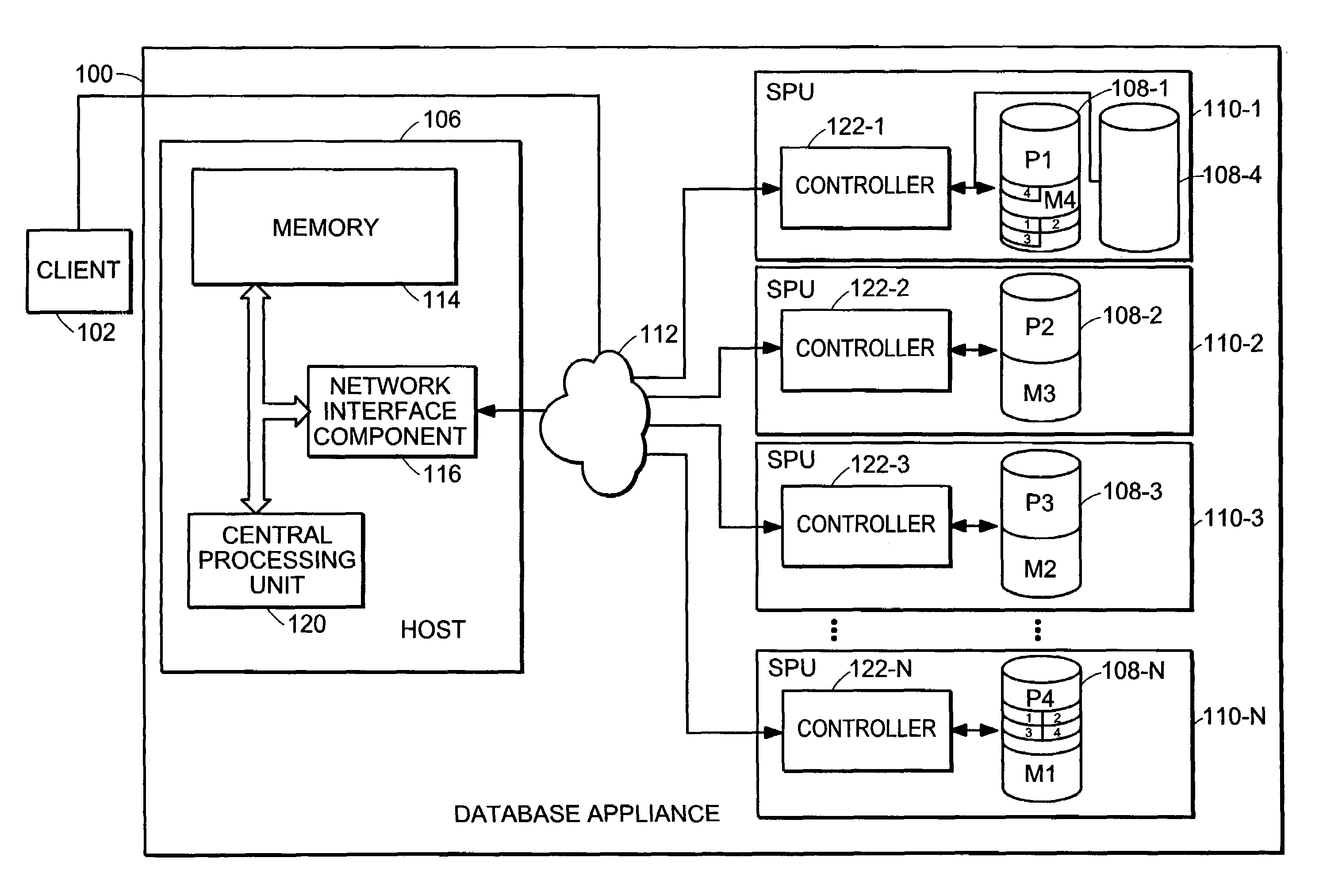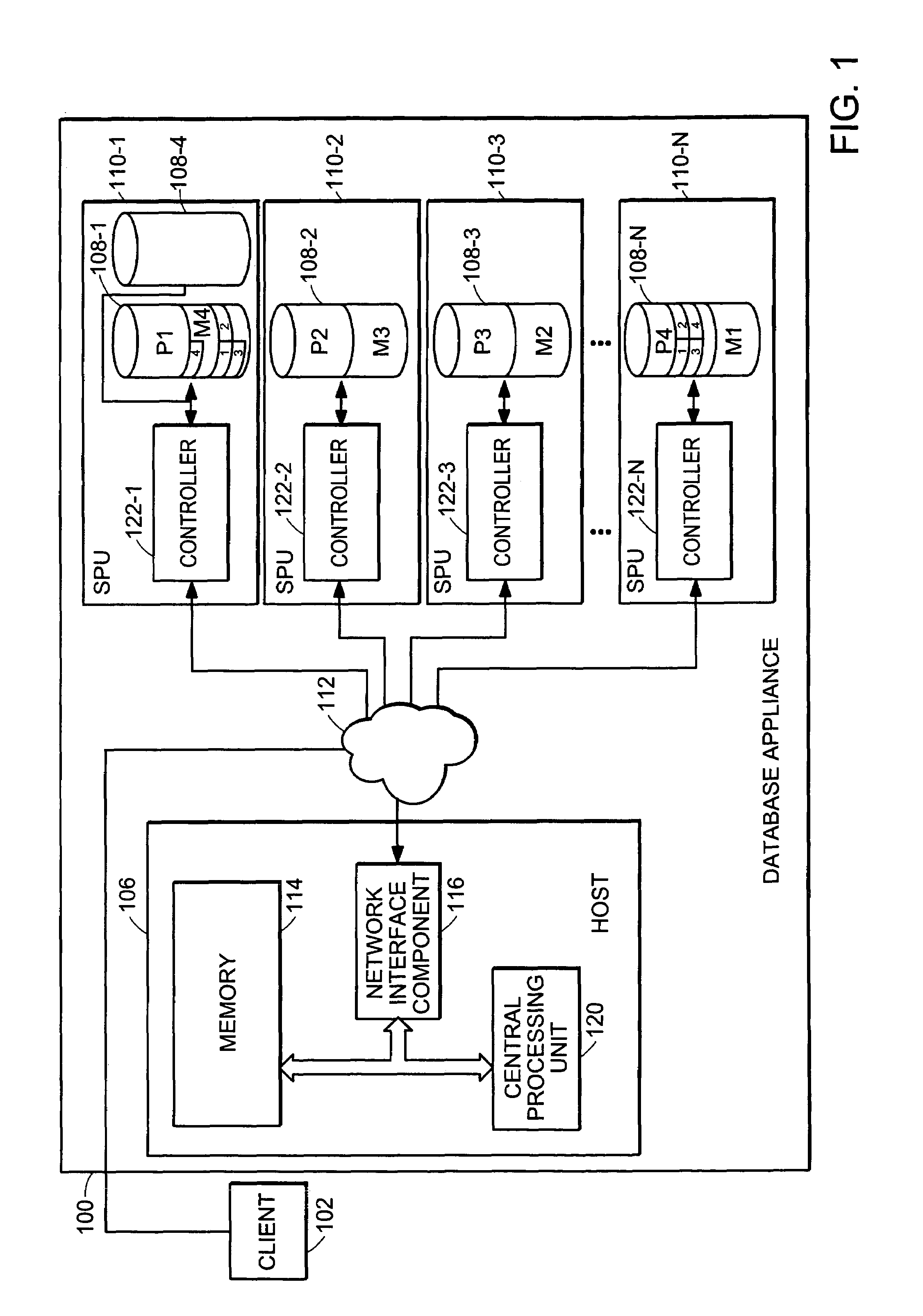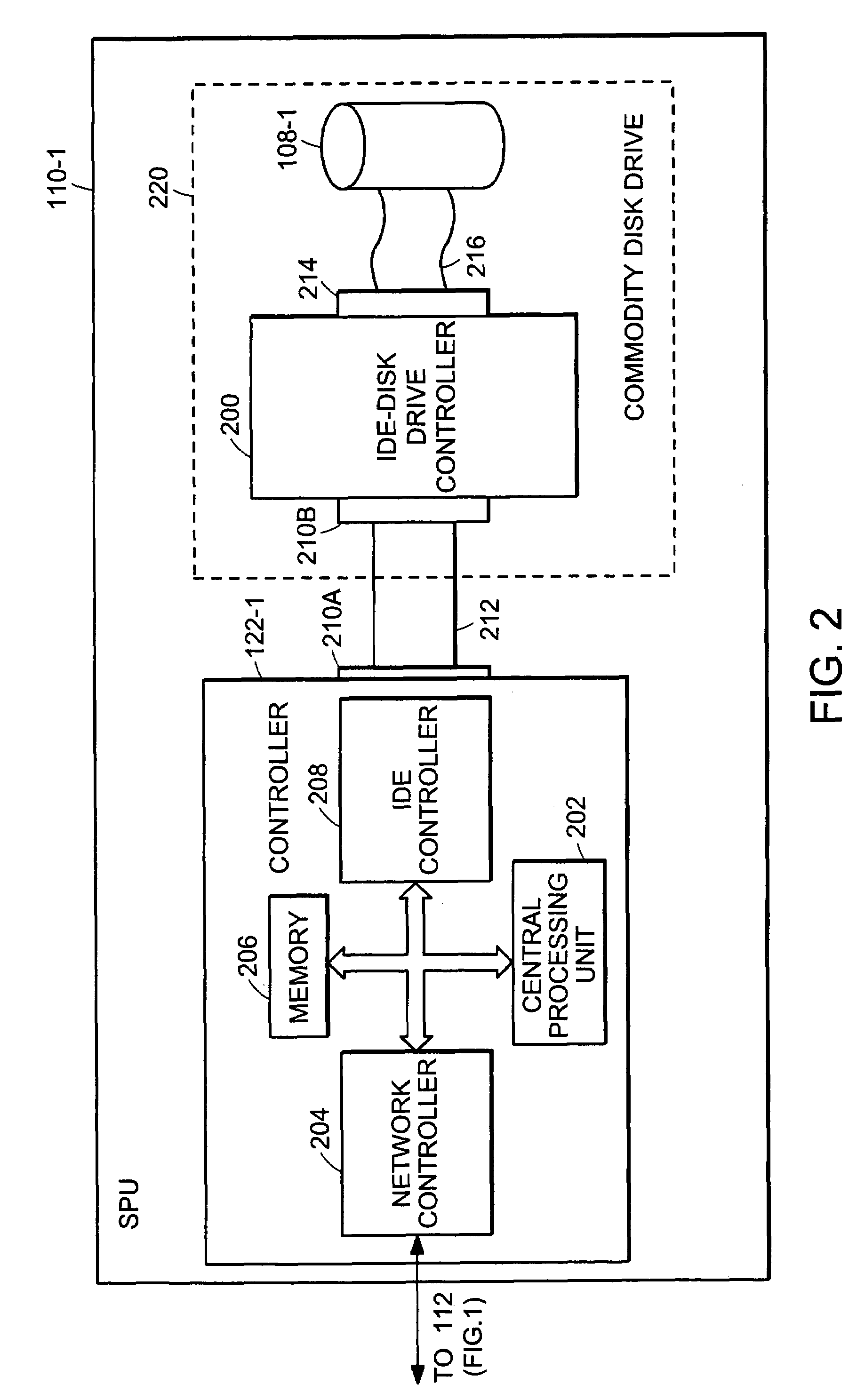Disk mirror architecture for database appliance with locally balanced regeneration
a database appliance and locally balanced technology, applied in error detection/correction, redundant hardware error correction, instruments, etc., can solve problems such as inaccessibility of the whole system, and achieve the effect of increasing the general speed of the system
- Summary
- Abstract
- Description
- Claims
- Application Information
AI Technical Summary
Benefits of technology
Problems solved by technology
Method used
Image
Examples
Embodiment Construction
[0027]A description of preferred embodiments of the invention follows.
[0028]FIG. 1 is a block diagram of a database appliance 100 according to the principles of the present invention. The database appliance 100 includes a host 106 for processing database requests received from a client 102 and a plurality of disk drives 108-1, . . . , 108-n storing the database. Each of the plurality of disk drives 108-1, . . . 108-n is coupled to a respective Controller 120-1, . . . 120-n. Each Snippet Processing Unit (SPU) 110-1, . . . 110-n forms a processing assembly that includes a respective controller 122-1, . . . 122-n and at least one disk drive. In the embodiment shown, controllers 122-2, 122-3 and 122-n are each coupled to one disk drive and controller 122-1 is coupled to two disk drives. Each SPU is coupled to a host 106 through a data communication network. 112. The SPU performs the primitive functions of a query to the database, controlling all aspects of reading from and writing to a ...
PUM
 Login to View More
Login to View More Abstract
Description
Claims
Application Information
 Login to View More
Login to View More - R&D
- Intellectual Property
- Life Sciences
- Materials
- Tech Scout
- Unparalleled Data Quality
- Higher Quality Content
- 60% Fewer Hallucinations
Browse by: Latest US Patents, China's latest patents, Technical Efficacy Thesaurus, Application Domain, Technology Topic, Popular Technical Reports.
© 2025 PatSnap. All rights reserved.Legal|Privacy policy|Modern Slavery Act Transparency Statement|Sitemap|About US| Contact US: help@patsnap.com



